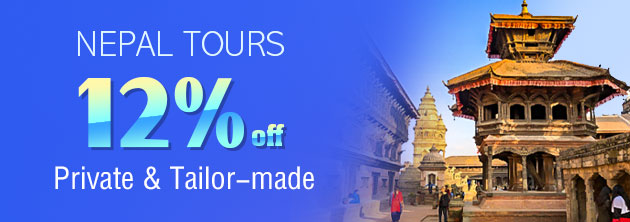5 Things You Can’t Miss About Nepal Tea House
Heading off for a thrilling expedition to Nepal? How about experiencing a lodging right in the lap of nature? A basic accommodation facility en route popular trekking trails in the Everest, Langtang, and Annarpurna regions is a must-try for the ones who want to feel nature at its closest.We are talking about “Nepal Tea Houses”. Just like the term itself, the accommodation is equally interesting.
Tea Houses – An Introduction – for Those Who Are Clueless!
Tea Houses are basic accommodation facilities built on the way to several trekking trails in Nepal. These lodges offer stay and meals at a very basic and minimal rate, and are owned and operated by the Sherpas in the Everest region. Towards the west in the Annapurna region, the tea houses are monitored by the National Trust for Nature Conservation (NTNC). Please note, that Nepal Tea Houses maintain specific rules including fixed pricing, standard menus, number of guests to name a few, and you must maintain your expectations according to the same.5 Interesting Things about the Tea Houses
1. Food
To start with the most important of all, food in tea houses are something to really try your taste buds with. Nothing wins you over a looming mountain pass like the comfort of a home cooked meal waiting on your dining table to savour your taste buds. The staple food served in Nepal is the famous Dahl Bhaat – the fresh and healthy meal. A plate of Dahl Bhaat includes steamed rice, soup made of lentils and pulses (daal), vegetable curry and spinach. However, the variation comes in taste, servings and ingredients in the curry and lentil. The best part of the meal? It is all served together and is refilled when required. Extremely healthy and refreshing, it works as a relaxing meal after a hectic day of trekking. (See also: 10 Nepal Famous Food)Along with this staple meal, expect Nepali delicacies like momos and other cuisines too.
A typical breakfast looks like this:
• Tea, coffee, hot chocolate, and/or juice• Eggs (any style)
• Ham/bacon/sausage (based on availability)
• Toast with butter/jam/honey
• Chapatti, Tibetan bread, muesli porridge
• Hash brown potatoes
• Pancakes/crepes
Lunch and dinner may vary between these:
• Dahl Bhat
• Pasta, noodles, chow mein, noodle soup, spaghetti, fried rice
• Momos, pakauda
• Popcorn, chips, potatoes
• Spring rolls
• Pizza
• Sandwiches and soup
• Dessert (rice pudding, chocolate pudding, apple or banana fritters)
2. Rooms – Private/Shared
Most of the tea houses have similar setup when it comes to the bedrooms. With two to three twin beds in every room, the room is a simple one furnished with one overhead light, a window and a thin plywood wall parting the adjacent rooms. Beds are generously comfortable with foam pad, pillows, and good quality blanket. Don’t expect luxury in stay, but the arrangements are clean enough to offer you enough rest and comfort at day end.Rooms are suggested to be pre-booked for reservations, so that you don’t have to share with strangers when you ultimately land up there. However, during peak seasons, you might be requested to adjust likewise as the number of tea houses are limited on the trekking trials.
3. Accommodation and Facilities
• Common Area
Tea houses have common open rooms with tables arranged around the perimeters to allow trekkers to sit, hangout, relax and dine. A wooden stove right at the center (winters) is placed to provide warmth, and at few places, there might be a TV in the common area to entertain the guests.• Kitchen
A tea house kitchen is connected to the common area or the dining room. The kitchen is stacked with utensils and is a plain sight. However, the warm sight of Sherpas cooking, the flavours of home-cooked food and the heat of the fire are something never to be missed in this cosy area.• Toilet and Shower
Do expect the same outside the tea house, and hence don’t forget to keep a head torch handy, just in case during night visits. Also, flush toilets are rare in Nepal tea houses, so do be prepared to use squat pans. Use of water is more common, as toilet papers are not available.4. Electricity, Wi-Fi and Charging Points
Basic access to electricity is available in tea houses to charge your gadgets and for lighting the room. However, at few places, you might be charged nominally for the same. Please note that access to charging points are often limited in the busier tea houses where demand for charging points is high.5. Tea House Etiquette and Manners
Most interesting of all is the typically simple etiquette maintained in the Nepal tea houses. The ambience is extremely laid back and you don’t have to follow strict rules to stay there. However, bargaining for room rates isn’t allowed as it is already kept at quite nominal. Food is cooked in-house and hence should be consumed head wise to avoid wastage.Additionally, since trekking is a messy affair especially affecting the shoes, it is courteous to remove them outside the rooms and slip in to flip-flops for indoors.
Additional Tips and Facts for Nepal Tea Houses:
Tea Houses are a unique experience. And certainly among the few lodging resources on your way to trekking mountains in Nepal. Do give it a shot if you don’t want to miss this – an exclusive stay to say the least.

